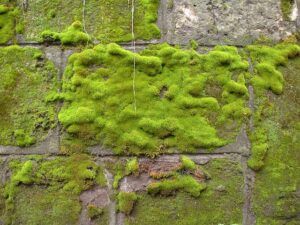
Unraveling the Moss Compass: A Guide to Wilderness Navigation
Imagine you’re deep in the heart of a dense forest, the sun obscured by a thick canopy of leaves. Your compass is lost, your phone is out of service, and you’re unsure which way leads back to civilization. But nature has its own built-in compass that can guide you: moss.
Moss, that humble green carpet hugging tree trunks and rocks, can be your secret navigation tool when all else fails. It’s like an unassuming Sherpa guiding you through the wilderness.
#1: The Moss Myth – The North-Facing Guide:
The common belief is that moss predominantly grows on the north side of trees. This theory hinges on the fact that in Northern Hemisphere, the north side of objects typically receive less sunlight, creating a damp environment where moss thrives.
But here’s where it gets tricky – this isn’t always accurate. Depending on local conditions such as tree species, terrain and moisture levels, moss can grow all around a tree or object.
So while it’s not a foolproof method, it can still serve as a rough guide when you’re disoriented in unfamiliar terrain.
#2: The Moss Habitat – The Moisture Magnet:
Moss loves moisture. It’s like a sponge in plant form. If you find yourself in an area with abundant moss growth, chances are there’s water nearby – perhaps a stream or pond hidden just beyond your line of sight.
In survival situations, finding water is often more crucial than finding your way out immediately. So let moss lead you to hydration first before embarking on your journey back to civilization.
#3: The Moss Indicator – The Environmental Barometer:
Beyond direction and hydration cues, moss also serves as an environmental indicator. Lush green moss indicates healthy air quality as these tiny plants are sensitive to pollution.
On the other hand, if you notice areas where moss should be but isn’t, or if the moss is yellowed and dying, it could be a sign of environmental distress. This information can help you avoid potentially harmful areas.
#4: The Moss Code – The Survival Language:
In some cultures, moss has been used as a form of communication in the wilderness. For instance, certain Native American tribes would arrange moss in specific patterns to convey messages or directions to others.
While this practice isn’t widespread today, it’s an interesting piece of trivia that highlights the versatility of this unassuming plant.
Remember, nature is filled with hidden clues and tools for survival. Moss is just one example. Learning to read these signs can not only help you navigate the wilderness but also deepen your connection with the natural world.
Next time you’re out on a hike or camping trip, take a moment to appreciate the humble moss. It’s more than just scenery; it could be your lifeline in the wild.
Stay safe and happy exploring!